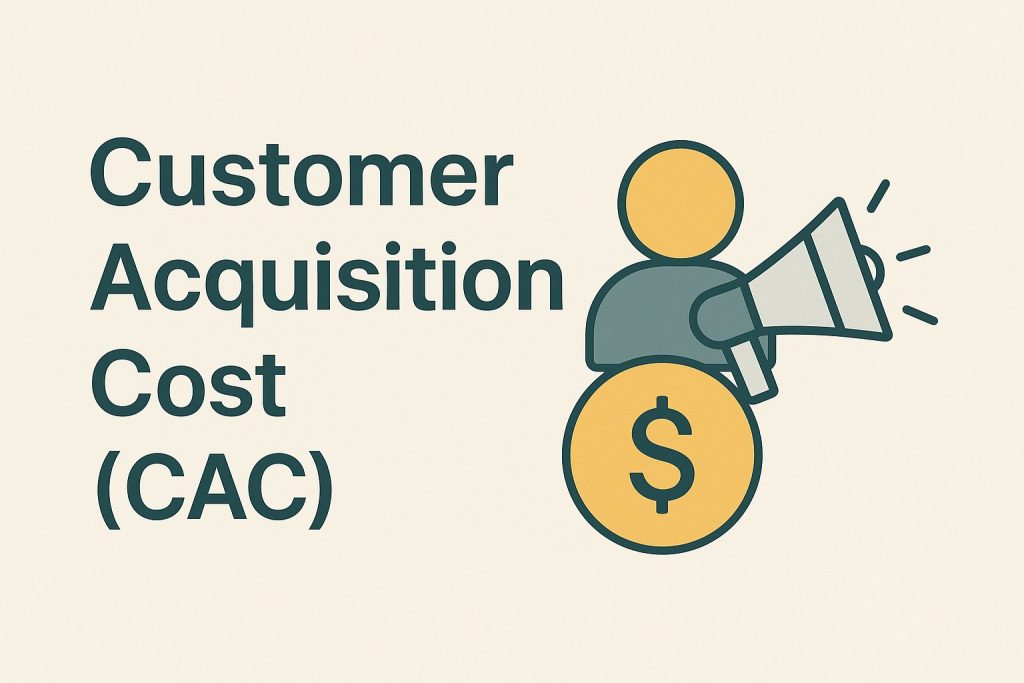Are you spending a fortune on marketing without knowing if it’s actually working?
You run a killer Facebook ad campaign, your content is getting clicks, and traffic is up. But are you actually making money? If you can’t answer that question with confidence, you have a serious blind spot in your business.
There’s one metric that cuts through the noise and tells you exactly how effective your digital marketing spend is: Customer Acquisition Cost (CAC).
Too many businesses throw money at digital marketing and hope for the best. That’s not a strategy; it’s a gamble. Understanding your CAC is the difference between gambling and making smart, data-driven investments that fuel real growth.
This guide will show you exactly what CAC is, how to calculate it without getting a headache, and most importantly, how to reduce it for a much healthier ROI. Let’s get into it.
What is Customer Acquisition Cost (CAC)?
Customer Acquisition Cost (CAC) is the total cost of sales and marketing efforts needed to acquire one new customer over a specific period. In simple terms, it’s what you spend to get a single paying customer through the door.

This includes everything:
- Ad spend (Google Ads, Facebook Ads, etc.)
- Salaries of your marketing and sales teams
- Content creation costs
- Software and tools (CRM, email marketing platforms)
- Commissions and bonuses
CAC gives you a clear, hard number that represents the price of growth. Without it, you’re flying blind, unable to tell if your campaigns are profitable or just expensive hobbies.
Why You Absolutely Must Track Your CAC
Ignoring CAC is like trying to drive a car without a fuel gauge. You might be moving, but you have no idea when you’re going to grind to a halt. Tracking this metric is non-negotiable for any business that wants to scale sustainably.
Here’s why CAC is so vital:
- It Determines Your Profitability: This is the big one. If it costs you $100 to acquire a customer who only ever spends $80 with you, you’re on a fast track to going out of business. Your business model only works if what customers pay you (their Lifetime Value or LTV) is greater than what it costs you to get them.
- It Optimizes Your Marketing Spend: Once you know your CAC, you can start analyzing which channels are the most effective. Maybe your Google Ads bring in customers for $50, but LinkedIn Ads cost you $200 per customer. Where should you double down? The data makes the decision for you.
- It Justifies Marketing Investment: When you can walk into a meeting and say, “For every $75 we spend, we get a new customer who is worth $500 to us,” you’re no longer asking for a budget. You’re presenting a money-making machine. It transforms marketing from a cost center into a growth engine.
A key benchmark to aim for is an LTV to CAC ratio of 3:1. This means for every dollar you spend acquiring a customer, you get three dollars back over their lifetime. A ratio of 1:1 means you’re breaking even, and anything less means you’re losing money.
How to Calculate Customer Acquisition Cost (The Simple Formula)
Calculating CAC doesn’t require a degree in advanced mathematics. It’s actually pretty straightforward.
Here’s the basic formula:
CAC = Total Marketing & Sales Costs / Number of New Customers Acquired
Let’s break that down.
- Choose a Time Period: Pick a specific period you want to measure (e.g., a month, a quarter, a year).
- Add Up Your Costs: Sum up all your sales and marketing expenses for that period. Be thorough! Include ad spend, salaries, tools, agency fees—everything.
- Count Your New Customers: Determine how many new customers you acquired during that same period.
- Divide: Divide the total costs by the number of new customers.
CAC Calculation Example:
Let’s say you run an e-commerce store and want to calculate your CAC for the last quarter.
- Total Marketing & Sales Costs:
- Ad Spend: $10,000
- Marketing Team Salaries: $15,000
- Marketing Software Subscriptions: $1,000
- Total Costs = $26,000
- New Customers Acquired: 500
Now, let’s plug those numbers into the formula:
CAC = $26,000 / 500 = $52
Your Customer Acquisition Cost for that quarter was $52. This means you spent an average of $52 to bring in each new customer. Now you have a baseline to work from and improve upon.
5 Powerful Ways to Reduce Your CAC
A high CAC can drain your resources and cripple your growth. The goal is to lower that number without sacrificing quality or volume. A lower CAC means a higher marketing ROI and more profit in your pocket.
Here are five proven strategies to reduce your CAC.
1. Optimize Your Conversion Rates (CRO)
Getting more visitors to your site is expensive. Converting more of the visitors you already have is pure profit. This is Conversion Rate Optimization (CRO), and it’s one of the most effective ways to lower CAC.
- A/B Test Your Landing Pages: Test headlines, button colors, images, and copy. A small lift in conversion rate, from 2% to 3%, can dramatically reduce your CAC.
- Simplify Your Checkout Process: Every extra step or field in your checkout is a reason for someone to abandon their cart. Make it as fast and frictionless as possible.
- Add Social Proof: Display customer reviews, testimonials, and case studies. People trust other people. Show them that buying from you is a safe and smart choice.
2. Leverage Customer Retention
Remember the LTV:CAC ratio? Improving your LTV is just as powerful as reducing your CAC. Happy, loyal customers who buy from you again and again are marketing gold.
- Start a Referral Program: Encourage your existing customers to become brand advocates. Offering a small incentive (like a discount or store credit) for a successful referral is often much cheaper than acquiring a customer through paid ads.
- Focus on Customer Onboarding: A great first experience ensures customers stick around. Teach them how to get value from your product quickly so they don’t churn.
- Use Email Marketing: Stay in touch with your customers. Send valuable content, exclusive offers, and personalized recommendations to encourage repeat purchases.
3. Refine Your Audience Targeting
Stop trying to sell to everyone. Spray-and-pray marketing is a recipe for a high CAC. The more targeted you are, the more efficient your ad spend will be.
- Drill Down on Your Buyer Personas: Who is your ideal customer? What are their pain points? Where do they hang out online? Use this information to create highly targeted ad campaigns.
- Use Retargeting: Someone visited your pricing page but didn’t buy? Retarget them with a specific ad that addresses potential objections or offers a small discount. These leads are warm and convert at a much higher rate.
- Leverage Lookalike Audiences: Platforms like Facebook can analyze your existing customer list and find new people with similar characteristics. This is a powerful way to find high-intent prospects.
4. Invest in Content and SEO
Paid ads give you results now, but you have to keep paying. Content marketing and SEO are investments that pay dividends over the long term.
A blog post you write today can attract organic traffic and generate leads for years to come, all for the initial cost of creating it. This “free” traffic from search engines brings your blended CAC down significantly over time. Focus on creating high-value content that solves your audience’s problems.
5. Automate Your Marketing
Are your marketing and sales teams spending time on repetitive, manual tasks? Automation can free them up to focus on high-impact strategies.
- Marketing Automation Software: Use tools like HubSpot or Marketo to automate email sequences, lead nurturing, and social media marketing for growth or only posting contents on social media as a daily routine.
- Chatbots: Implement a chatbot on your website to answer common questions and qualify leads 24/7, reducing the need for constant human oversight.
Conclusion: Make CAC Your Compass for Growth
Customer Acquisition Cost is not just another piece of marketing jargon. It is a fundamental health metric for your business. It provides the clarity you need to make smart decisions, optimize your marketing ROI, and build a truly sustainable company.
Don’t guess anymore. Start by calculating your CAC today. Even a rough estimate is better than nothing. Once you have your number, you have your benchmark.
Then, pick one of the strategies above and focus on improving it. Test, measure, and iterate. By making a conscious effort to lower your CAC, you’re not just saving money or you’re building a more efficient, profitable, and scalable organic business growth machine.


